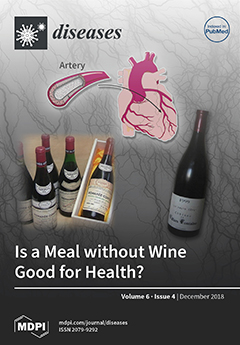Trans-resveratrol, the most well-known polyphenolic stilbenoid, is found in grapes and accordingly in wine and it is considered to be beneficial for human health, especially towards the aging-linked cell alterations by providing numerous biological activities, such as anti-oxidant, antitumoral, antiviral, anti-inflammatory, neuroprotective,
[...] Read more.
Trans-resveratrol, the most well-known polyphenolic stilbenoid, is found in grapes and accordingly in wine and it is considered to be beneficial for human health, especially towards the aging-linked cell alterations by providing numerous biological activities, such as anti-oxidant, antitumoral, antiviral, anti-inflammatory, neuroprotective, and platelet anti-aggregation properties. Although
trans-resveratrol is a promising molecule, it cannot be considered as a drug, due to its weak bio-availability and fast metabolism. To overcome these weaknesses, several research teams have undertaken the synthesis of innovative
trans-resveratrol derivatives, with the aim to increase its solubility in water and pharmacological activities towards cell targets. The aim of this review is to show the chronological evolution over the last 25 years of different strategies to develop more efficient
trans-resveratrol derivatives towards organism physiology and, therefore, to enhance various pharmacological activities. While the literature on the development of new synthetic derivatives is impressive, this review will focus on selected strategies regarding the substitution of
trans-resveratrol phenyl rings, first with hydroxy, methoxy, and halogen groups, and next with functionalized substituents. The effects on cell functions and dysfunctions of interesting resveratrol analogs will be addressed in this review.
Full article






